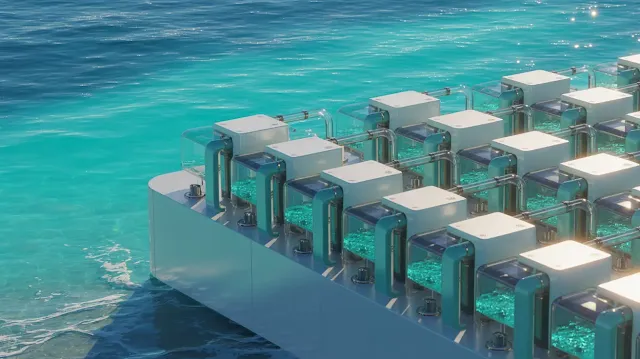Green Hydrogen from Seawater: The Next Leap in Sustainable Energy
Unlocking a Clean Energy Future from the Ocean
Green hydrogen is fast becoming a key pillar in the global push for net-zero emissions. As industries seek sustainable alternatives to fossil fuels, a new frontier is emerging: producing green hydrogen directly from seawater, without the need for desalination. This innovation could dramatically cut costs and reduce environmental impact, positioning it as a game-changer in clean energy tech.
Why Green Hydrogen from Seawater Matters
A Sustainable Alternative to Fossil-Fueled Hydrogen
Traditionally, hydrogen production has relied on natural gas, creating a massive carbon footprint. Even when renewable energy is used for water electrolysis, freshwater desalination is typically required, an energy- and cost-intensive process.
Direct Seawater Electrolysis: A Breakthrough Solution
The new approach bypasses freshwater entirely. By extracting hydrogen directly from seawater, it removes a major logistical barrier and aligns better with global sustainability goals, especially in water-scarce regions.
Major Scientific Breakthroughs in Seawater Electrolysis
Efficient Catalysts from the University of Adelaide
In a landmark study, Australian researchers developed a cobalt oxide catalyst, enhanced with chromium, to produce hydrogen and oxygen directly from seawater. The method works with high efficiency and low toxicity, eliminating the formation of chlorine gas, often a byproduct of seawater electrolysis.
RMIT’s Advanced Nickel-Molybdenum Technology
Another research team at RMIT University created a highly porous nickel-molybdenum catalyst, optimized with fluorine and nitrogen. This advanced material not only prevents chlorine production but also performs under normal temperatures and pressures, drastically reducing operational costs. The technology is currently under patent review and could soon reach commercial viability.
Real-World Applications and Pilot Projects
SeaHydrogen: A Multi-Use Platform in the Netherlands
Wageningen University recently introduced SeaHydrogen, a pilot project integrating green hydrogen production with membrane distillation and energy recovery. This system utilizes waste heat from electrolysis to generate clean water, proving that energy and water solutions can be combined for greater efficiency and lower cost.
Offshore Hydrogen Platforms in China
In a global first, China’s CenerTech deployed a full-scale system aboard an offshore platform to produce green hydrogen directly from seawater. This initiative demonstrates commercial viability at sea, leveraging offshore wind and solar power to run the process entirely on renewables.
The Debate: Do We Still Need Desalination?
The Case Against Eliminating Desalination
Some energy experts remain skeptical. Studies published in Joule and conducted by researchers at Helmholtz-Zentrum Berlin argue that desalination consumes a negligible amount of total energy in green hydrogen production, less than one percent in most cases. They question whether the additional complexities of seawater electrolysis justify bypassing desalination altogether.
Key Trends Driving the Industry Forward
Accelerated Research and Development
The past few years have seen an explosion in research into direct seawater electrolysis, with new peer-reviewed studies and pilot programs expanding rapidly.
Hybrid Systems Are Gaining Momentum
Combining hydrogen production with water treatment, thermal energy recovery, and desalination is shaping the next wave of multi-purpose clean energy systems.
Offshore Integration Is Becoming Feasible
Successful projects in China and Australia prove that green hydrogen production at sea can operate reliably under real-world conditions.
Future Outlook: Is This the Green Hydrogen Revolution?
While the technology is still in its early stages, the future looks promising. These innovations show that direct seawater hydrogen production can be efficient, clean, and scalable, especially when combined with renewable energy and water purification technologies.
That said, technical and economic challenges remain. From corrosion and energy loss to chlorine management and system stability, solving these issues is key to full-scale adoption.
SEO Summary: Why This Matters Now
Green hydrogen from seawater could redefine global energy strategies. Here’s why:
No freshwater needed: Direct use of seawater cuts costs and simplifies infrastructure.Eco-friendly production: Avoids chlorine byproducts and reduces environmental risk.
Lower costs: New catalysts make hydrogen more affordable and scalable.
Offshore potential: Systems powered by wind and solar unlock remote applications.
As the global race toward clean energy intensifies, direct seawater electrolysis is poised to be one of the most revolutionary technologies of this decade.




Write a comment, your opinion matters to us